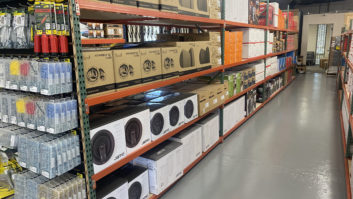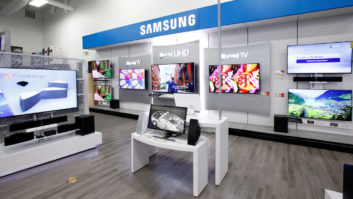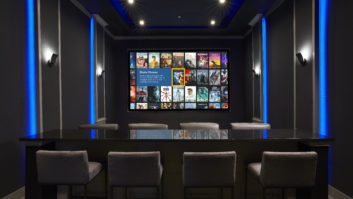
You probably watched the Super Bowl. And you probably watched the ads. (I don’t know what Spielberg’s new movie Super 8 is about, but I already know that I LOVE IT!) And you probably remember the ad with Ozzy Osbourne and — did he really just say he looked like a girl? — Justin Bieber. What you might not remember was that that commercial — all $3 million worth of air time of it — was for Best Buy promoting a new program called Buy Back.
Now, on the surface, Buy Back sounds kind of slick. How many times have you purchased a piece of technology only to find out that a year later it was out of date and something newer, faster, better, cheaper, and more bionical had come along? Laptop, cell phone, digital camera…these types of technologies just seem to live to burn us the second we walk out of the store. If only there was a way to turn your old steaming pile of silicon worthlessness into a fresh gleaming pile of silicon awesomeness. On the surface, that’s kind of what Best Buy seems to be offering with their Buy Back program.
But, let’s dig a little deeper, shall we?
First, any time a major corporation offers something, it isn’t because they love you. They don’t sit around the big-boy table discussing things like, “What can we do to show our customers how much we love them? How can we… give back?” They don’t. If it were up to them, they would check the box that says “Don’t ever need to see you again, please just send money,” followed by you sending them money each month like an HMO at which point they would sit back and deny you coverage at every opportunity. So, take any offer like this with a heaping grain of, “Hmmm, I wonder what’s in it for them?” And what’s in it for them is an added revenue stream to cover ultra-low margin products.
The Buy Back program is offered on mobile phones, laptops, netbooks, tablets, and TVs, and comes with a decreasing repurchase value for each item upon Buy Back depending on the length of time you’ve had it, or just how stale and rotten your putrefying piece of technology has become. From 31 days to six months you would receive 50 percent of the original purchase value; from six months to a year 40 percent; from one year to 18 months 30 percent; and from 18 months to 24 months 20 percent. For TVs only, you can play the long con from 24 months to 48 months and receive 10 percent of your purchase price.
OK, says you, I get to play with my new tablet for five months and 29 days, get it all choked down with crazy-lame apps and fingerprints and then trade that clunker in on the new iPad with (insert must have feature here). So, you paid $500 for your iPad and now they’ll give you $250 in credit. Oh, but wait… You forgot that Buy Back wasn’t free after the initial few day launch/trial period. So you have to factor the price that you paid for the privilege of being able to Buy Back. That price is $69.99 for laptops, Netbooks, or tablets and $39.99 for smartphones costing less than $350 and $59.99 for phones over $350. So really that is a net Buy Back price of $180 for your gently used iPad. That comes with a store credit that can only be used at Best Buy. Want to know what used iPads are going for on eBay? Right now they are fetching around $385 and up. And that is cash that can be used anywhere that cash is accepted. (Assuming you didn’t get suckered in to some Nigerian prince scam where they convinced you to take Western Union. Dude: Don’t do it!)
Mobile phones are actually credited back differently, and their value is based on the original retail value of the phone, not the discounted price you might have paid. But since you usually can’t trade in a phone while you are under some “severe penalties for early withdrawal” clause, and that these contracts generally run for two years — the length of time where you are actually eligible for a Buy Back — and that getting new phone when renewing your contract is usually massively discounted, again, this seems like a lot of smoke and mirrors and a bonus $59.99 to Best Buy’s bottom line.
For TVs, the Buy Back is even more Best Buy-rutalizing. According to Gary Merson over at hdguru.com, Best Buy is charging $99.99 for TVs selling for $500 to $1,199.99, $179.99 for sets $1,200 to $2,499.99 and $349.99 for TVs costing $2,500 to $5,000. (Sets over $5000 aren’t eligible, though, seriously, does Best Buy even sell sets that cost that much?) So, let’s take my Pioneer Elite 60-inch Kuro set that is a little over two years old. That set sold for $6,000, so, well, damn! It isn’t eligible. Crap! OK, so let’s say that I bought a 60-inch Sharp AQUOS set that is selling for $2,799.98. I think, “Gee, that upgrade idea sounds swell, helpful sales fella!” and I pay my $349.99 to upgrade. Then two years go by, and I’ve decided that I now LOVE 3D (I probably had a stroke or massive head injury or something because I just do NOT see that happening. So I go down to my Best Buy with my trade-in card or coupon or whatever and they offer me, let’s see, we’ll do the math… 10 percent of my $2,800 purchase is $280. And, gee! I only paid $350 for the Buy Back privilege. I ended up PAYING Best Buy $70 for the privilege of returning my set. How special! Or, I could have saved the original $350, then gone onto Videogon.com and sold the set for probably $1,000 to $1,400 (this is speculation; I do not engage or trade in TV futures) and taken THAT money and bought a new TV anywhere I felt like it.
Oh, and PS: There’s no telling that you’re going to get the full percentage value. According to the Buy Back FAQ:
Q: When I come in to redeem my Buy Back, how is my product assessed, and how does that assessment determine how much money I get back?
A: Geek Squad Agents perform a condition check using our proprietary software system. This tool enables us to conduct a fair appraisal with standardized metrics for each product covered by the Buy Back Program. Devices will be given one of three classifications:
GOOD or FAIR. The device is fully functional with no technical problems, and only a few scratches due to normal use. If the condition of the device as Good or Fair, you’ll receive the full Buy Back amount.
POOR. The device has one or more of these issues: minor functional damage or product failure that can be easily repaired, and more than normal visible wear and tear, including cracks, dents, scratches, dirt, user-added stickers and other signs of use. If the condition is Poor, the Buy Back amount will be reduced by 50 percent.
SUBSTANTIALLY IMPAIRED. The device has one or more of these issues: It has functional damage or product failure that affects its ability to perform its function or impairs its use and cannot be easily repaired; it has been recalled by its manufacturer, and has not been repaired or replaced previously; it has water damage or damage from other fluids; it shows indications of a serial number modification; it has insect/rodent infestation/damage. All damage described in this case must be repaired either under manufacturer warranty or service plan, or at your cost. The device will not be accepted in Substantially Impaired condition and the cost of the Buy Back Program will not be refunded. If the device is considered to be Substantially Impaired, the device will be rejected.
The highlighted portion is mine, but basically Best Buy will determine the condition of the unit. And you better keep all of your original parts, accessories, and manuals, or that’s a paddlin’.
Maybe we should have listened to Ozzy’s subliminal warning at the start of the ad. For consumers, getting on this idea seems like hopping all aboard the Crazy Train.







